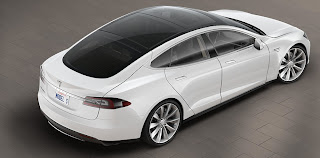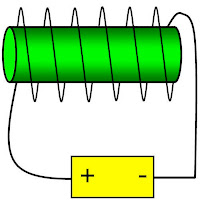I grew up like a lot of guys from my generation, being perfectly fine and "relevant" as long as I followed the rules of Shadetree Mechanic protocal.
Kinda sounds like a smart-ass thing to say, but the truth of the matter was that a lot of our dads and grandfathers thought, when we were growing-up, that a bicycle handle made for a decent shift linkage, or that it was cool to retrofit a beer keg into a gas tank for a sand rail.
That's what was in-vogue during our childhoods and throughout much of our teen years. A lot of us lived in a world where a Vega stuffed with a small-block was a "fast" car, and burnt fuel was a sign of muscle car "greatness."
But then things changed; we changed. I got my first taste of what GM could do with turbos on mouse motors when my neighbor in Northridge, a decent LA suburb, took me for a ride in his '91 GMC Syclone. That was in 2002 and I was 18 at the time. It was a thing of amazement to watch a small V-6 crank out that much power, but it also caused a bit of a cultural division.
Facts were facts: when it came to beer-and-pretzel time in my dad's garage, there were a lot of things that me and the old man could agree on, but then there were a lot of things that we couldn't.
I love Buick Grand Nationals; my dad simply sees them as Regals. I know for a fact that the Syclone was the fastest production pickup ever made by GM; my dad once told me that he would try to find me a "used Syclone" in the Antelope Valley if he could.
What a wild thing to say, and such insult to the General's turbo-6 legacy. A used Syclone?! Really?! It was like saying, "You know, your ex-girlfriend, Jenny McCarthy?!"
The cultural gap that grew between me and my family on so many levels was disturbing at best, and caused for much drunken shouting at worst. My parents loved me as I grew in the '90s, but that was mostly because the '90s was a decade in which I pretended that I was in the same time zone as them.
That's why we listened to Van Halen and drank Coronas at every lake trip we took, and it was also why backyard etiquette and suburban chivalry took throne over such principles as book knowledge and public television.
Public TV was for "nerds," and so was Barney the dinosaur. Likewise, no one would dare talking about building a Pinto with DC motors, let alone a Chevelle. Meat and potatoes, that's all it was, and if you were going to "run what 'ya brung" at LACR, then you better damn well have had something with gas and pistons. Because we used to get so excited by fossil fuels and moving parts when we were kids, watching Grandpa Munster as he drag raced a pro-streeted coffin down the tarmac.
But "Dragula" never had DC motors, neither did the Munsters' hot rod hearse. They used what we called back then, "V-8s," and legend had it that those giants of motors ran on alcohol and with blowers.
Back then, we also had sticks that we would put in our motors to make them sound neat; in those days, we referred to them as "camshafts," and they were said to improve motor muscle by opening the valves wider and faster. Once I had said that I could hear the "sound of horsepower," but then one of the elders had informed me that it was actually the sound of valve overlap, and that the "cool sound" that it made actually suffocated the engine's performance. How cool was that?!
But then there was a problem, or an inconsistency at least: along came the Internet and with it, YouTube. It was YouTube that revealed the world of DC performance to my eyes in full, and then I just got really mad!
Truthfully, the whole thing was downright silly; why should I be mad at my network of friends and family for not knowing that a DC electric was faster than an LS on 91-octane? That's ridiculous, it's not like our parents worked for the big oil industry. My dad never worked for General Motors. I, myself have never worked for GM, Ford or Chrysler; what did I have to be bitter about?!
Next thing I knew, it was 2013 and I was almost in my '30s. My mom fled to Reno, leaving my sister to raise my baby nephew, Gionni, who would be the first baby gearhead that I'd ever seen. Actually, Gionni was probably the only baby anybody had ever seen who liked to play with drums, smart devices and toy cars. What a combo!
But then along came a spider, and his name was Elon Musk, inventor of personal space travel and PayPal web shopping. One time he came up with an idea: let's build a really sweet car that runs on nothing except DC motors and lithium batteries.
That's where I come in. Topanga mall had opened a Tesla showroom near the Nordstrom's, and it became my very own, "Toys 'R Us."
The afternoon before this was published, I got to take a ride in a Tesla Model S P85. Fast? Nah, this thing was the Starspeeder 3000 made manifest. It wasn't about speed with the P85, but more like intergalactic transit.
In essence, the P85 version of the Model S is a personal-use version of the Hyperloop capsule, but with tires, wheels and axles. At the time of my test drive with Mitch Melassanos, I feared for the many Vettes, Ferraris and Lambos of the land, or Woodland Hills. Melassanos, who is an operations manager for The Los Angeles Fashion, had invited me and made it clear that he was ready to buy.
Hell, weren't we both at that point?! I loved Tesla, but after a quick Calabasas run in a P85, I fell deeply in love with Tesla Motors, and the fat new toy that they offered to the world.
Truthfully, the Model S is not like a car at all, but if you know anything about the Hyperloop's theory of air suspension, then yeah, just try to apply that to the car and that's basically what the thing does. The P85 does more than snap sideways when you stab its throttle; come to think of it, it "thrusts" forward far more than it "snaps." Once it does, it honestly feels like it wants to peel itself off of the ground and whisk through a low-pressure tube from LA to San Francisco.
Mitch Melassanos explains to Tesla Motors and myself that he has many friends who do aviation, and to them, the acceleration of Tesla's P85 is like an airplane, about as close as anyone can come in a passenger car.
But here's how you can differentiate between a luxury sedan and one built for performance: in a luxury sedan, you don't sweat cold beads and you don't get an earful of "guy grunt." But from the back seat of a Tesla P85, you sure do! In fact, all you need is some beef jerky and you're set!
That's because the P85 is the muscle car that you would've seen at the Star Tours' space port, while you waited in line with C3PO and R2, as R2 made a few adjustments to the Starspeeder before departure to Endor.
And as Melassanos stabs the P85's throttle, I can hear "Captain Rex" from the Starspeeder's cockpit shout for R2D2 to hit light speed, and this performance tweak is one that the Starspeeder and P85 apparently share in common.
Thanks again to Tesla Motors of Topanga, along with Mitch Melassanos. Without them, I would've never known what it was like to drive in a real Starspeeder 3000!








































.jpg)












